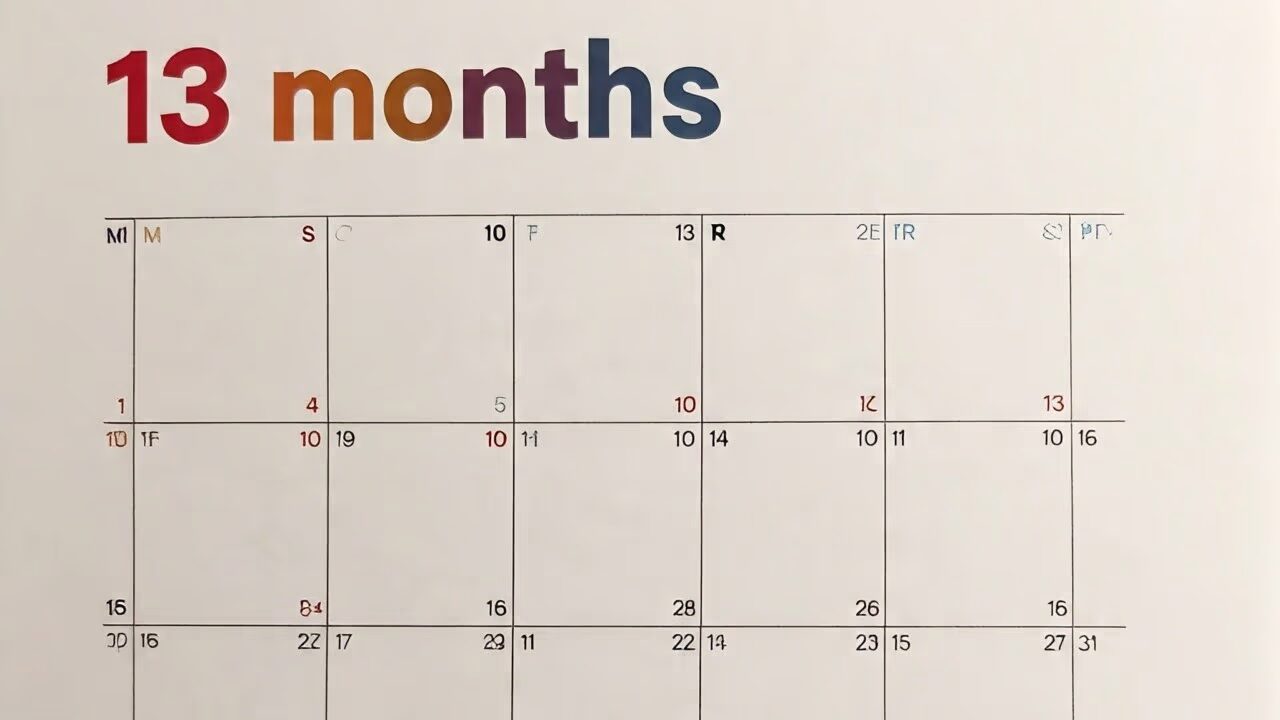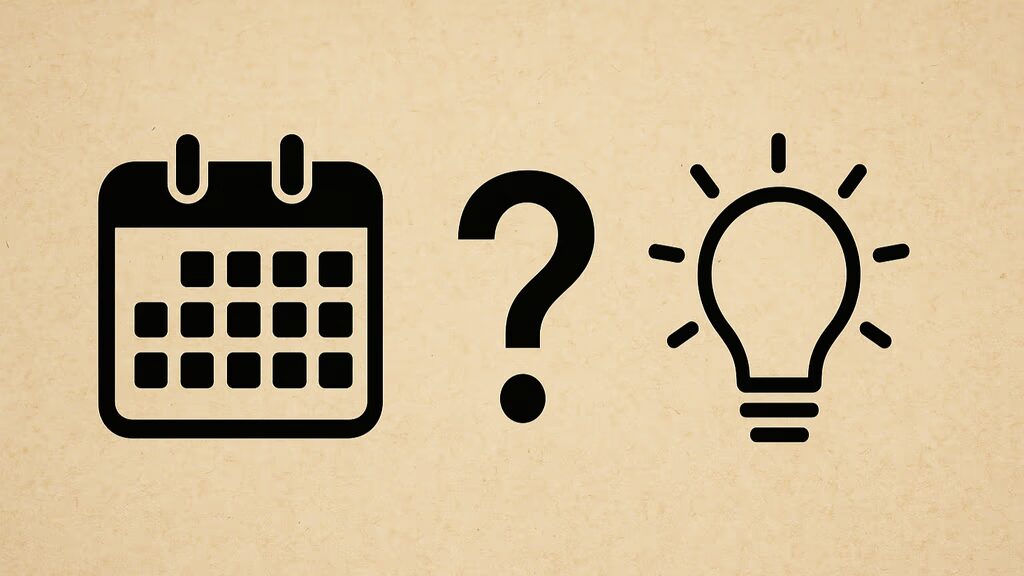
Whatever your thoughts may be, the irregularities of the Gregorian calendar as it stands today can often be very confusing. The months are of different lengths; holidays shift from one weekday to another every year, and planning just becomes a mess. Hence, numerous reformers and thinkers have proposed alternative calendars, one of the most popular of which is the 13-month calendar, also known as the International Fixed Calendar or Positivist Calendar.
The arrangement was made to furnish a uniform, steady, and therefore logical system of time measurement. So what is it about this 13-month calendar that keeps so many people around the world alive?
ALSO READ- Khelo Bharat Niti-2025
Structure of the 13-Month Calendar-
The focus of the design of the 13-month calendar was on simplicity and uniformity:
- 13 Months of 28 Days Each.
- This yields 364 days per annum.
- The 1st, 8th, 15th, and 22nd of each month always fall on the same weekday.
- Superb for scheduling.
The Extra Month is – Sol.-
- Put in between June and July.
- Named in honour of the sun, coinciding with the summer solstice.
History of the 13-Month Calendar-
- A proposal made in 1902 by Moses B. Cotsworth was a simplified business calendar.
- Adopted in 1928 by George Eastman (founder of Kodak), and used at Kodak until 1989.
- Inspired earlier reforms, e.g. ‘Georgian calendar’ by Reverend Hugh Jones in 1745.
- Supported by a reformer like Auguste Comte, who proposed new months’ names.
- Though popular among reformers, it was never widely accepted throughout the world.

Benefits of the 13-Month Calendar-
Consistency-Each month of the year has the same characteristics, making the accounts very easy to plan and keep organised.
- There are no more complicated months where billing or timelines depend on whether the month has 30 or 31 days.
- It could help all businesses and governments to standardise processes worldwide.
- Minimises human error in calculations for budgets, contracts, and projects.
- Reliability chosen date always lands on the same weekday.
- Every month on the 1st is a Sunday, and thus will always be uniform.
- Scheduling could be made in the long run for the learning institutions, businesses, and events.
- Travel, health, or international coordination will have steady patterns that will help in coordination.
Business Efficiency-Payroll will become simpler, along with quarterly reports and scheduling.
- That renders more accurate and transparent financial planning over a set of weeks.
- They could save on administrative time loss caused by the irregular calendars.
- Gains in efficiency could mean billions saved in accounting and HR globally.
Educational Transparency-Easier to teach and learn compared to the irregular Gregorian months.
- Now, children no longer need to memorise which months have 30 or 31 days.
- Clears away confusion for students studying history, astronomy, or global trade.
- Brings easier global education through unifying time measurement standards.
Challenges to Adoption-
- Breaking the Cycle of 7 Days of Observance-A few religions objected as the holidays were going to shift weekly religious observances, such as the Sabbath, from the usual Sunday service.
- The new arrangement threatens the disruption of centuries-old traditions that were spiritual and cultural.
- Religious leaders feared disruption of their community gatherings and ritual aspects of shared worship.
- Resistance to Change-most definitely, people and institutions have put in place for the Gregorian calendar.
- Government, schools, and companies are heavily attached to the idea of 12 months.
- Changing would involve changes in laws, contracts, financial systems, and even technologies.
- This enormous global coordination made most of their leaders unwilling to take such a risk.

Cultural Traditions – Some Holidays and Names of the Months have a History-
- Christmas, Easter, and New Year’s are fixed on certain dates.
- A month carrying a religious significance or historical value, such as July for U.S. Independence Day.
- The fear of losing that continuity is through changing the names and order of the months.
Conclusion-
With equal months, fixed weekdays, and an intelligent layout, this calendar rectifies most of our issues with inconsistent dates. Acceptance of such a calendar would be halted by traditions, religions, and other standards for global governance.
However, the International Fixed Calendar has continued to prove that even something as ancient as our timekeeping can evolve and thus keeps giving birth to discussions about how we measure our lives.
FAQs on the 13-Month Calendar-
The 13-month calendar was an initiative designed to make all months equal in length and align weeks perfectly with dates. Every month consists of 28 days divided into four weeks, which gives enormous structure and predictability to the system. This eliminates the irregular shifting that occurs with the Gregorian calendar – months vary between 28, 30, and 31 days. By creating a calendar where every month accedes to the same rhythm, it would be possible to carry out different planning, accounting, education, etc. The idea is to simplify life and establish a more rational, constant approach to timekeeping.
Sol is the name of the new month inserted between June and July in the 13-month calendar. It is sometimes named after the sun, symbolising mid-year brightness and balance. This 13th month was a real creation to fit 364 days evenly into a well-moulded year of 52 weeks. Sol thereby put the year more logically and made every season more equally represented. For every other region in the Northern Hemisphere, its location in the midst has made it more auspiciously related to the solstice.
The 13-month calendar had a clear logic in its construction, but it was hampered by many factors from taking root globally. Of course, one of the strongest issues was the issues raised by religion, for in some years, the calendar upsets the traditional seven-day week cycle and thereby upsets long-standing practices such as the Sabbath. Then culture also mattered a lot. Last, considering that this system was so well-entrenched in the previous Gregorian calendar, almost every government, business, and individual was too invested in it to make the possible shift to instate something new, which seemed disruptive.
Ethiopia is a country that follows a 13-month calendar.
